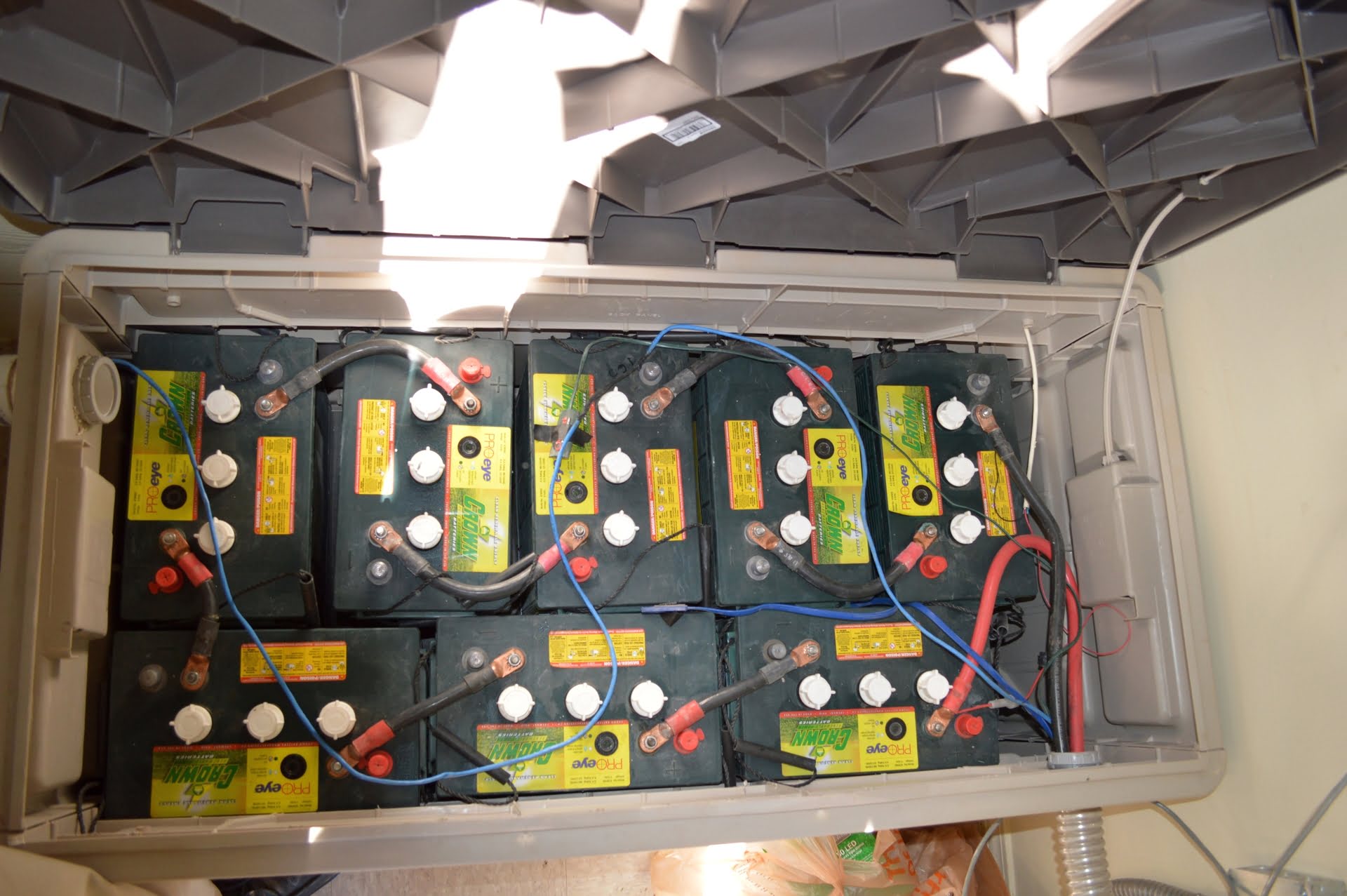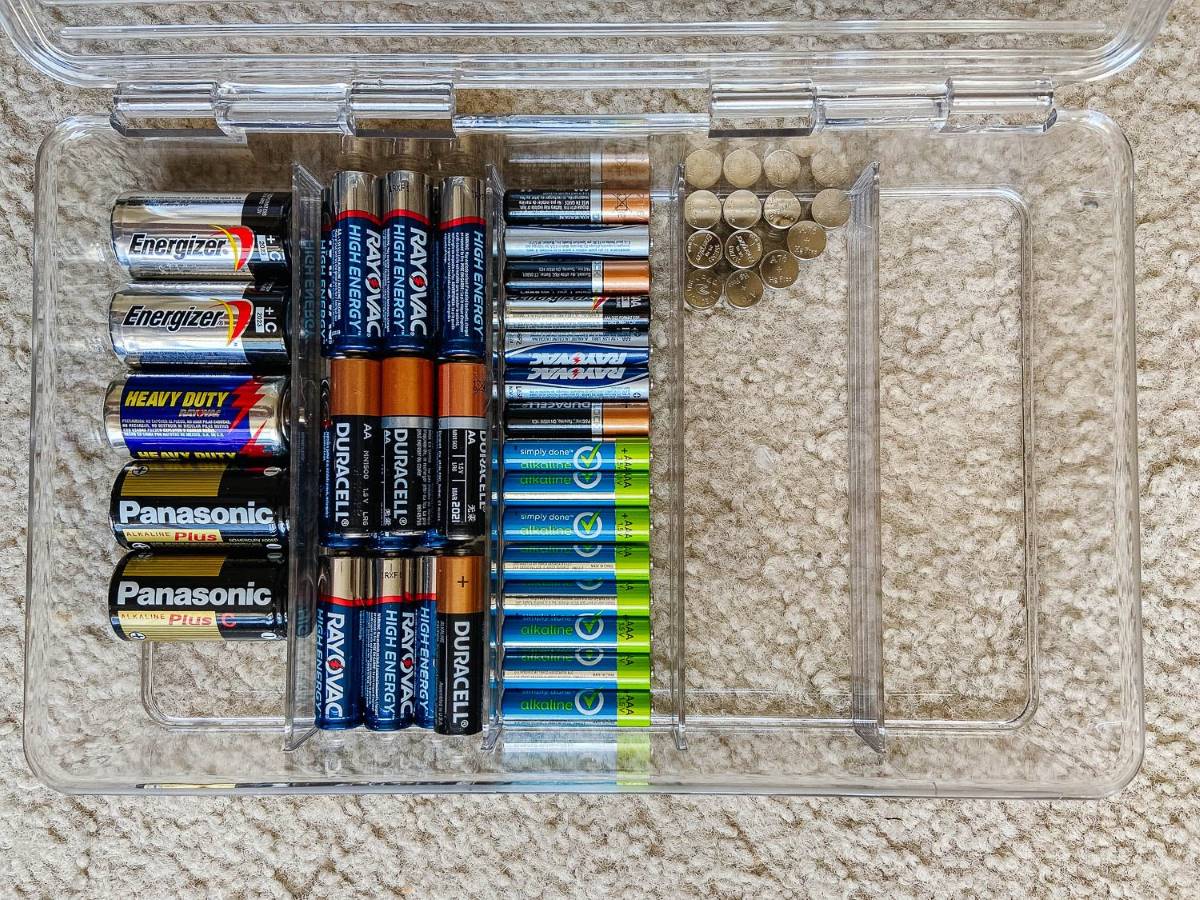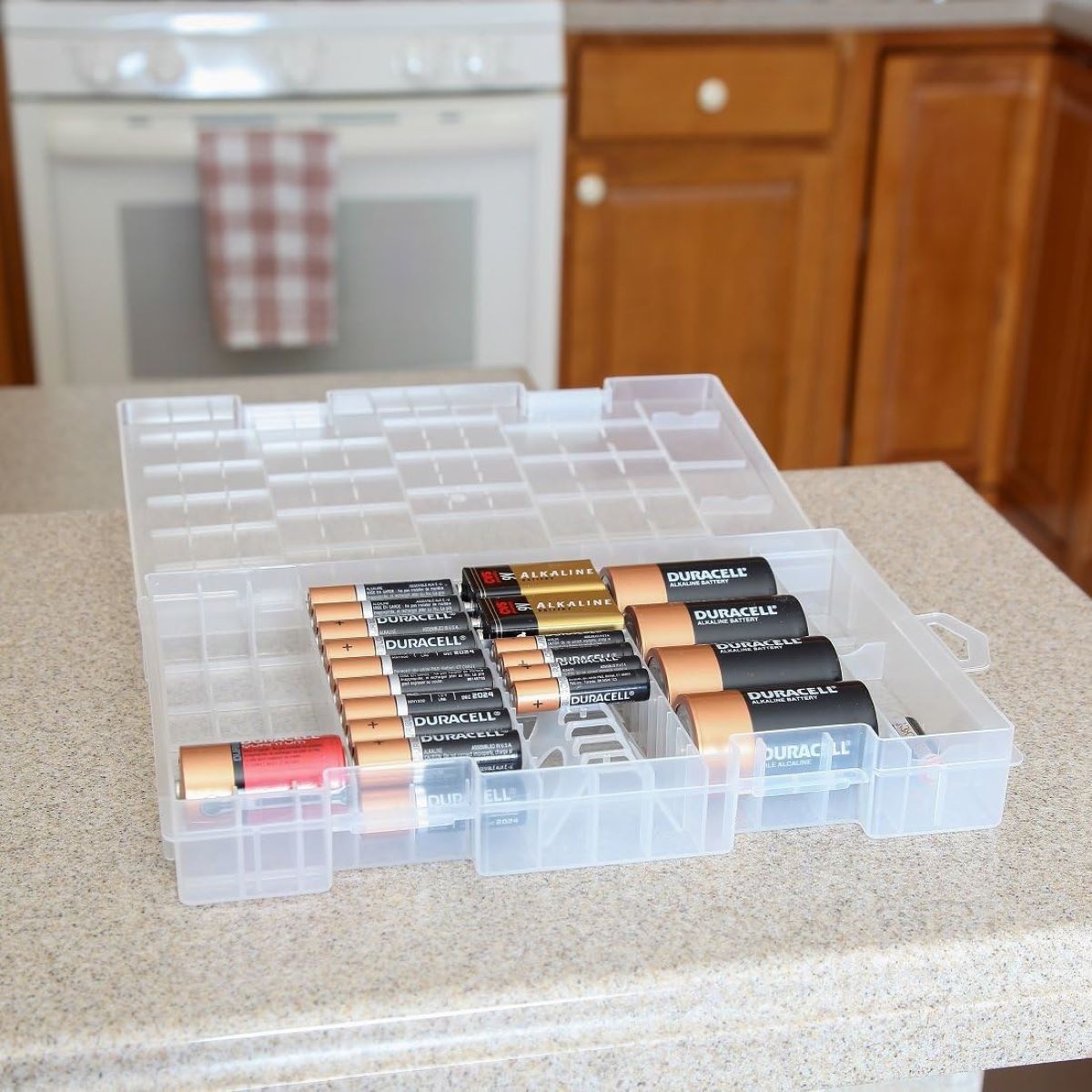

Articles
How To Store A Battery For Winter
Modified: January 7, 2024
Learn the best practices for storing batteries during the winter season to prolong their lifespan and prevent damage. Check out our informative articles for helpful tips and tricks.
(Many of the links in this article redirect to a specific reviewed product. Your purchase of these products through affiliate links helps to generate commission for Storables.com, at no extra cost. Learn more)
Introduction
Winter is a challenging time for batteries, as the cold weather can significantly impact their performance and lifespan. Whether you’re storing a car battery, a laptop battery, or any other type of battery, it’s crucial to take proper precautions to ensure its longevity during the winter months. By following a few best practices, you can safeguard your batteries and ensure they will be ready for use when warmer weather arrives. In this article, we will discuss the best practices for storing batteries in winter and guide you through the steps necessary to protect them from common winter-related issues.
Key Takeaways:
- Properly storing batteries during winter is crucial for longevity. Follow best practices like fully charging, cleaning, and monitoring to ensure optimal performance when warmer weather arrives.
- Disconnect and store batteries in a cool, dry place. Regular monitoring and preparation for reinstallation are key to maintaining battery health and performance.
Best Practices for Storing Batteries in Winter
When it comes to storing batteries during the winter, there are several key practices that you should follow to maximize their lifespan and prevent damage. These practices apply to various types of batteries, including car batteries, rechargeable batteries, and even household batteries. Let’s explore some of the best practices for storing batteries in winter:
- Fully Charge the Battery: Before storing the battery, make sure it is fully charged. This helps maintain its capacity during the storage period and prevents it from dropping below critical levels.
- Remove the Battery from Devices: If you are storing batteries that are in electronic devices, such as laptops or cameras, it is crucial to remove them. Leaving batteries inside devices can lead to discharge over time, which can result in performance degradation.
- Keep Batteries Clean: It’s essential to keep batteries clean before storing them. Wipe off any dirt or debris on the battery’s exterior using a clean cloth. This prevents corrosion and ensures optimal performance.
- Store in a Cool, Dry Place: Find a cool and dry place to store your batteries, away from direct sunlight and extreme temperature fluctuations. High temperatures can accelerate self-discharge, while freezing temperatures can cause irreversible damage to the battery’s internal components.
Additionally, it’s crucial to store batteries upright to prevent any leaks or spills. Placing them in a sturdy container or using battery storage cases can help protect them further. It’s also wise to keep batteries away from flammable materials or sources of ignition, as they can pose a fire hazard if mishandled.
By following these best practices, you can ensure that your batteries remain in optimal condition throughout the winter season. However, it’s not enough to just store them and forget about them. Regular monitoring and maintenance are essential to prolong their lifespan. Let’s delve into the steps required to store batteries properly and how to prepare them for reinstallation.
Step 1: Check the Battery
Before storing a battery for the winter, it’s vital to perform a thorough inspection to ensure its current condition. Checking the battery beforehand allows you to identify any potential issues and take necessary precautions to prevent further damage. Here are a few key aspects to consider when checking the battery:
- Visual Inspection: Start by examining the battery for any signs of physical damage, such as cracks or leakage. Any bulging or deformities in the battery casing indicate potential internal damage and should be addressed promptly.
- Terminal Connections: Inspect the battery terminals for corrosion or buildup. Corroded terminals can hinder the battery’s performance and may require cleaning or replacement.
- Voltage Testing: Using a multimeter, check the battery’s voltage level. If it has significantly dropped since the last use, it may indicate self-discharge or a faulty cell. In such cases, it’s advisable to recharge the battery before storing it.
- Testing Capacity: For rechargeable batteries, it’s beneficial to test their capacity before storage. This can be done using a battery tester or by fully charging the battery and monitoring its usage time.
- Expiration Date: Some batteries come with an expiration date printed on them. Ensure that the battery is within its valid period and consider replacing it if it has expired.
If you notice any significant problems during the battery inspection, such as excessive leakage, severe corrosion, or a drastically reduced capacity, it may be best to consult a professional or replace the battery if necessary. Taking proactive measures to address these issues ensures that the battery is in optimal condition for storage and reduces the risk of further damage during the winter months.
Step 2: Clean the Battery
Cleaning the battery is an important step to ensure its proper functioning and longevity during storage. Over time, batteries can accumulate dirt, debris, and corrosion that can hinder their performance. Here’s how you can clean the battery effectively:
- Gather the Necessary Supplies: Before starting the cleaning process, gather the necessary supplies, including gloves, a small brush (such as an old toothbrush), baking soda, water, and a clean cloth.
- Put on Protective Gloves: It’s important to wear protective gloves to avoid direct contact with any chemicals or contaminants on the battery’s surface.
- Mix a Cleaning Solution: Create a cleaning solution by mixing a tablespoon of baking soda with a cup of water. Stir it well until the baking soda dissolves.
- Apply the Cleaning Solution: Dip the brush into the cleaning solution and gently scrub the battery terminals, removing any corrosion or buildup. Be careful not to scrub too vigorously as this can damage the terminals.
- Rinse with Water: After scrubbing, rinse the battery terminals with clean water to remove any leftover cleaning solution or residue.
- Dry Thoroughly: Use a clean cloth to dry the battery terminals and ensure they are completely dry before proceeding.
While cleaning the battery terminals is important, it’s also essential to clean the battery’s exterior surface. Wipe away any dirt or debris using a clean cloth dampened with water or a mild cleaning solution. Be careful not to allow any liquid to enter the battery’s vent holes or other openings.
By keeping the battery clean and free from corrosion, you can help maintain its electrical conductivity and prevent any potential issues during storage. An annual cleaning before winter storage is an excellent preventive measure to ensure optimal performance when the battery is needed again.
Step 3: Disconnect the Battery
Disconnecting the battery is a critical step when storing it for an extended period, such as during the winter months. This step helps to prevent any unnecessary discharge and ensures that the battery remains in optimal condition. Here’s how to disconnect the battery properly:
- Turn off the Device: If the battery is connected to a device, such as a car or electronic gadget, make sure to turn off the device before proceeding.
- Locate the Battery Terminals: Identify the positive (+) and negative (-) terminals on the battery. These are usually marked with respective symbols or colors, such as red for positive and black for negative.
- Disconnect the Negative Terminal: Begin by loosening and removing the nut or bolt securing the negative terminal clamp. Use a suitable wrench or pliers to disconnect the cable from the terminal. Wrap the disconnected cable with electrical tape, and make sure it does not come into contact with the battery terminal or any nearby metal surfaces.
- Disconnect the Positive Terminal: Repeat the process for the positive terminal by loosening and removing the nut or bolt securing the positive terminal clamp. Disconnect the cable and wrap it with electrical tape, as done with the negative terminal.
By disconnecting the battery, you eliminate any potential parasitic drain on the battery, which can occur even when the device is turned off. This helps to preserve the battery’s charge and prevent self-discharge during the storage period. Additionally, disconnecting the battery lowers the risk of accidental electrical arcing or short circuits while handling or storing the battery.
Remember to handle the battery with care during the disconnection process and avoid touching both terminals simultaneously to prevent any electrical shock or injury. With the battery safely disconnected, you can proceed to store it properly in a suitable location.
To store a battery for winter, fully charge it and then disconnect it from any devices. Store it in a cool, dry place away from direct sunlight and extreme temperatures. Check the battery periodically and recharge it if necessary to prevent it from fully discharging.
Read more: How To Store RV Battery For Winter
Step 4: Store the Battery in a Cool, Dry Place
Proper storage conditions are crucial for maintaining the integrity of the battery during the winter months. Storing the battery in a cool and dry place helps minimize the risk of temperature-related damage and extends its usable life. Here’s how to store the battery effectively:
- Choose the Right Location: Find a secure storage location that is cool and dry, away from direct sunlight, extreme temperature fluctuations, and moisture. A basement, garage, or utility room can be suitable options.
- Avoid Heat Sources: Ensure the storage area is free from heat sources, such as heaters or boilers. High temperatures can accelerate self-discharge and reduce the battery’s overall lifespan.
- Use Insulation: If storing the battery in an unheated area, consider insulating it to protect it from freezing temperatures. Insulating materials, such as foam or blankets, can help maintain a more stable temperature around the battery.
- Keep the Battery Upright: Store the battery in an upright position to prevent any potential leaks or spills. Placing it on a stable surface or using a battery storage case can provide additional protection.
Remember to keep the battery away from flammable materials or sources of ignition, as batteries can pose a fire hazard if mishandled or exposed to extreme conditions. It’s also important to periodically inspect the storage area to ensure it remains clean and free from any potential contaminants or hazards.
By storing the battery in a cool and dry place, you help maintain its charge and minimize the risk of damage. These storage conditions create an optimal environment for the battery, ensuring that it is ready for use when the winter season comes to an end.
Step 5: Monitor the Battery Periodically
While the battery is in storage during the winter months, it’s important to periodically monitor its condition to ensure it remains in good shape. Regular monitoring allows you to detect any potential issues and take necessary measures to prevent battery degradation. Here’s how you can effectively monitor the battery:
- Check the Battery Voltage: Use a multimeter to measure the battery’s voltage periodically. If there’s a significant drop in voltage, it may indicate self-discharge or a potential issue with the battery. Recharge the battery if needed to maintain its optimal charge level.
- Inspect for Corrosion: Check the battery terminals for any signs of corrosion. If you notice corrosion starting to build up, clean the terminals using a solution of baking soda and water and a small brush. This helps maintain good electrical conductivity.
- Ensure Proper Storage Conditions: Regularly assess the storage area to verify that it remains cool, dry, and free from any potential hazards or leaks. Make necessary adjustments to maintain the optimal storage conditions for the battery.
- Rotate the Battery: If you have multiple batteries in storage, consider rotating them periodically. This helps prevent any single battery from staying unused for an extended period, which can lead to self-discharge or capacity loss.
By monitoring the battery periodically, you can identify and address any potential issues before they escalate. This proactive approach helps ensure that the battery remains in good condition throughout the winter storage period.
It’s also important to note that different types of batteries have their own specific storage recommendations, so it’s essential to refer to the manufacturer’s guidelines for your particular battery. Following their recommendations will help you maintain the longevity and performance of the battery.
By dedicating a little time and effort to monitor the battery periodically, you can ensure that it remains in optimal condition and be confident that it will be ready for use when the winter season ends.
Step 6: Prepare the Battery for Reinstallation
As the winter months come to an end and you’re ready to reinstall the battery, it’s crucial to properly prepare it to ensure a seamless and efficient reinstallation process. Here’s how to prepare the battery for reinstallation:
- Clean the Battery: Before reinstalling the battery, give it a thorough cleaning. Remove any dust, dirt, or debris that may have accumulated during storage. Wipe the battery using a clean, dry cloth to ensure it’s free from any contaminants.
- Remove Insulation (if applicable): If you insulated the battery during storage to protect it from freezing temperatures, carefully remove the insulation materials. Inspect the battery for any signs of damage or unusual wear.
- Reconnect Cables: Start by reconnecting the positive (+) cable to the positive terminal and secure it tightly using the nut or bolt. Repeat the process for the negative (-) cable, ensuring a secure connection. Avoid overtightening, as it can damage the terminals.
- Inspect Terminals and Connections: After reconnecting the cables, inspect the battery terminals and connections for any signs of corrosion or buildup. Clean them using a brush and a solution of baking soda and water if necessary.
Once you’ve prepared the battery for reinstallation, it’s important to follow any specific instructions provided by the manufacturer or vehicle guidelines. This may include verifying that the battery is correctly oriented and ensuring all connections are secure.
Before using the device or vehicle, it’s advisable to test the battery’s voltage to ensure it has maintained a sufficient charge during storage. If needed, recharge the battery as recommended by the manufacturer to bring it to its optimal operating level.
By properly preparing the battery for reinstallation, you can ensure a smooth transition and optimal performance once it is back in use. Following these steps helps to prevent any potential issues and ensures a longer lifespan for the battery.
Conclusion
Properly storing batteries during the winter months is essential for maintaining their performance and prolonging their lifespan. By following the best practices outlined in this article, you can protect your batteries from the harsh effects of cold weather and ensure they remain in optimal condition. From checking the battery’s condition and cleaning it to disconnecting and storing it in a cool, dry place, each step plays a crucial role in battery maintenance.
Regular monitoring of the battery’s voltage and ensuring proper storage conditions are key to preventing self-discharge and damage. By periodically inspecting the battery and taking the necessary precautions, you can avoid potential issues and address them promptly.
As the winter season comes to an end, preparing the battery for reinstallation is the final step in the process. Cleaning the battery, reconnecting the cables, and inspecting connections ensure a seamless transition and optimal performance when the battery is back in use.
Remember, different types of batteries may have specific storage requirements, so it’s always wise to refer to the manufacturer’s guidelines. By following their recommendations, you can ensure your batteries are stored correctly and maintained according to their specifications.
Taking the time to properly store your batteries during the winter will not only extend their lifespan but also lead to cost savings in the long run. So, whether it’s a car battery, a laptop battery, or any other type of battery, follow these best practices and enjoy the benefits of well-maintained and reliable batteries.
Frequently Asked Questions about How To Store A Battery For Winter
Was this page helpful?
At Storables.com, we guarantee accurate and reliable information. Our content, validated by Expert Board Contributors, is crafted following stringent Editorial Policies. We're committed to providing you with well-researched, expert-backed insights for all your informational needs.















0 thoughts on “How To Store A Battery For Winter”